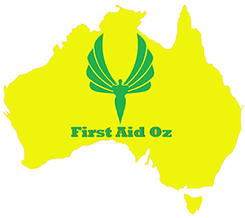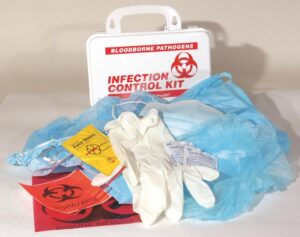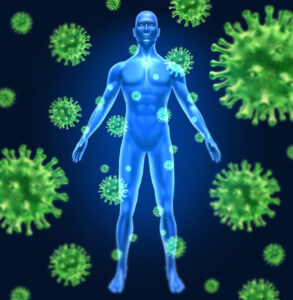Infection Control in First Aid
There are several important factors for infection control that are crucial in preventing the spread of infectious diseases. Some of these factors include:
Hand hygiene: Frequent hand washing with soap and water or using hand sanitizers is an essential measure to prevent the spread of infections.
Personal Protective Equipment (PPE): PPE such as masks, gloves, and gowns are important in preventing the transmission of infections.
Vaccinations: Vaccinations can prevent individuals from contracting and spreading infections.
Environmental cleaning: Proper cleaning and disinfection of surfaces, equipment, and facilities can help reduce the risk of infection.
Isolation precautions: Individuals with contagious infections should be isolated to prevent the spread of infection.
Education and training: Education and training for healthcare workers and the public can help increase awareness about infection control and prevention measures.
Surveillance and monitoring: Monitoring of infection rates and outbreaks can help identify and control the spread of infections.
Overall, a multi-faceted approach that incorporates these and other infection control measures is necessary to prevent and control the spread of infectious diseases.
Viruses – the most common causes of infection
There are many viruses that can cause illness in humans, and the most common viruses can vary by location, season, and population. However, some of the most common viruses that people may encounter include:
- Influenza virus: This is a common respiratory virus that causes the flu, which can be severe and even fatal in some cases.
- Rhinovirus: This is a common cause of the common cold, which can cause symptoms such as sneezing, runny nose, and sore throat.
- Respiratory syncytial virus (RSV): This virus can cause respiratory infections in people of all ages, but it is particularly common in young children and the elderly.
- Norovirus: This is a common cause of gastroenteritis, which is an infection that causes diarrhea, vomiting, and stomach pain.
- Herpes simplex virus: This virus can cause oral or genital herpes, which are infections characterized by painful sores or blisters.
- Human papillomavirus (HPV): This virus can cause genital warts and is also a leading cause of cervical cancer.
- Hepatitis viruses: Several different viruses can cause hepatitis, which is inflammation of the liver. Hepatitis B and C viruses are particularly common.
It is important to note that there are many other viruses that can cause illness in humans, and new viruses can emerge at any time. Therefore, it is important to stay informed about the latest developments in infectious diseases and take appropriate measures to prevent infection.
The importance of wearing PPE for First Aiders
 Wearing Personal Protective Equipment (PPE) is important for preventing the spread of infectious diseases and protecting both first aiders and causalities.
Wearing Personal Protective Equipment (PPE) is important for preventing the spread of infectious diseases and protecting both first aiders and causalities.
PPE is a specialized clothing or equipment designed to protect against various hazards that may cause harm to the wearer, including infectious agents such as bacteria and viruses.
Here are some of the key reasons why wearing PPE is important:
- Protection of First Aiders: PPE can help protect first aiders from exposure to infectious agents, which can reduce the risk of illness and infection.
- Protection of casualties: PPE can help prevent the spread of infectious agents from first aiders to casualties, which can reduce the risk of acquired infections during the administering of first aid.
- Prevention of cross-contamination: PPE can help prevent cross-contamination between casualties, where there are multiple victims, which can reduce the risk of outbreaks as a result from emergency first aid settings.
- Compliance with regulations: In many workplace settings, the use of PPE is required by law or regulation, during the application of first aid management.
- Promotes safe work environment: PPE is an essential element of a safe work environment for healthcare workers, and can help prevent injuries and accidents.
In summary, wearing PPE is essential in preventing the spread of infectious diseases and ensuring the safety of first aiders and casualties.
It is important for to have appropriate PPE in your first aid kits and ensure that first aid practitioners are trained in the proper use of PPE.
Check out our article on: Hygiene for First Aid
First Aid Oz is a trading name of Global Fitness Institute (RTO21793)



